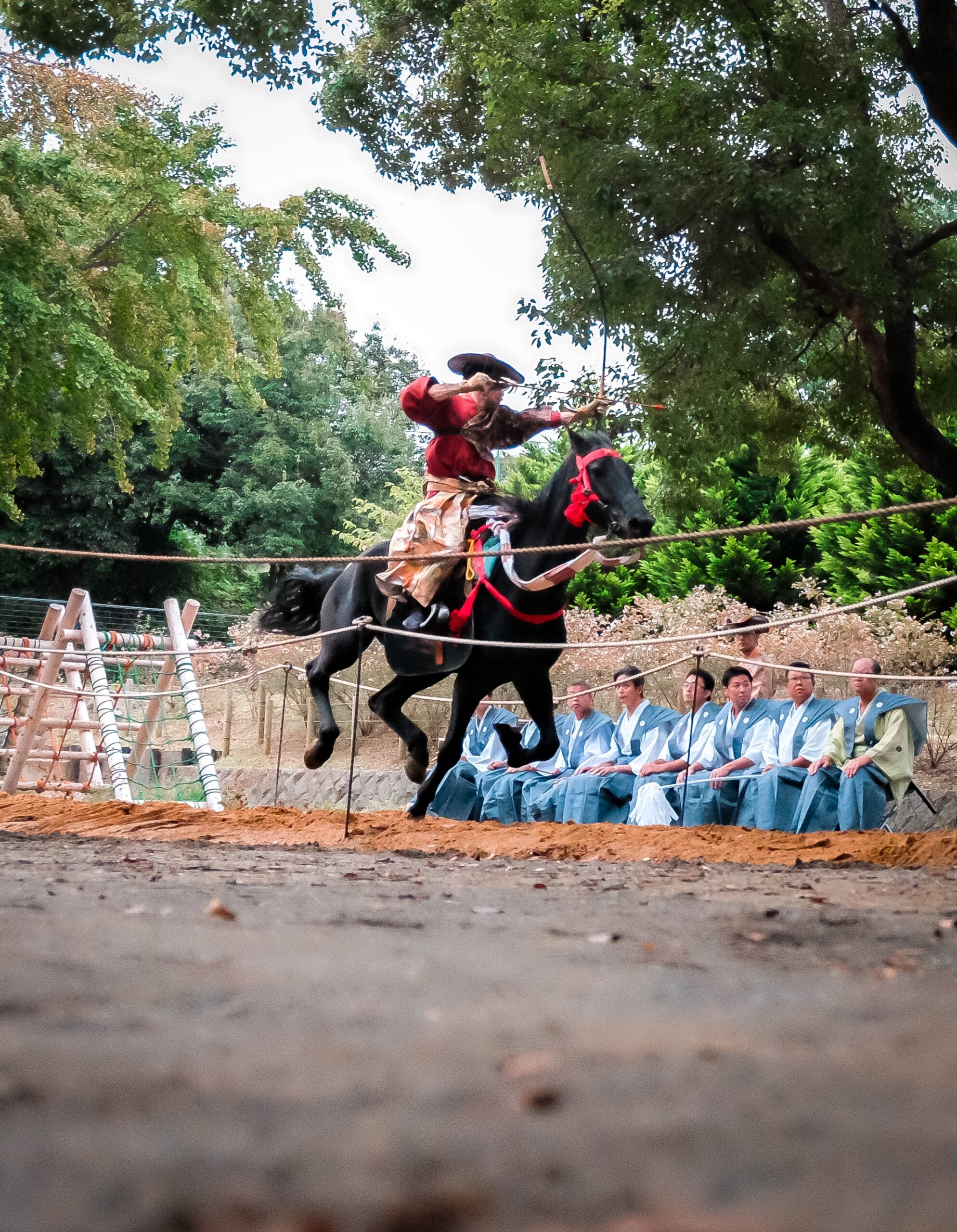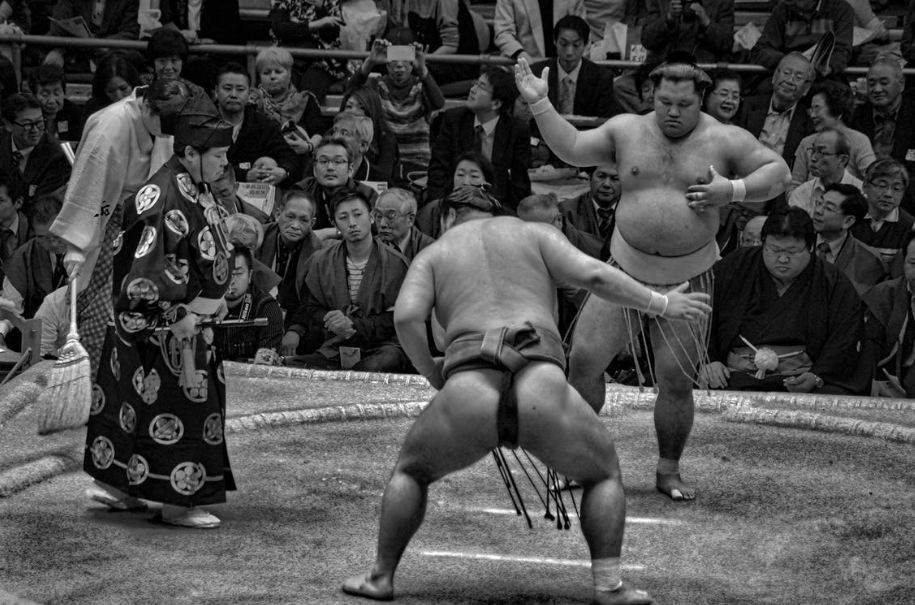What Is an Oni in Japanese Culture?
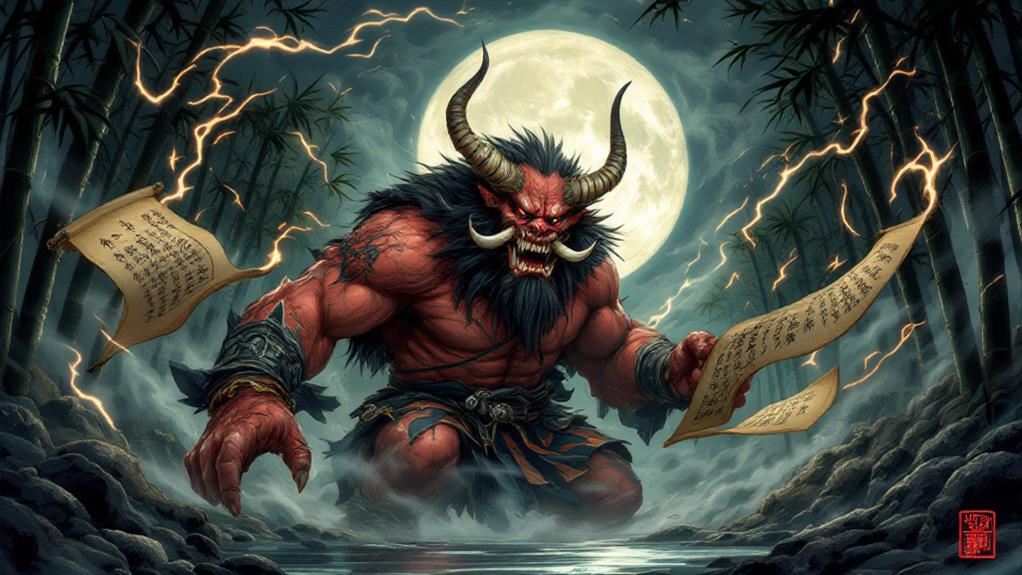
In Japanese culture, an oni is a fearsome demon-like creature that often embodies chaos and darkness. Initially spirits or gods, oni have evolved into symbols of natural disasters and moral transgressions. They stand as both menacing forces and enforcers of justice, punishing wrongdoers. Physically, oni are depicted as towering, muscular beings with vivid skin colors, wild hair, and horns. They serve as powerful symbols in folklore, traditional art, and modern media, representing personal and societal struggles. Festivals like Setsubun highlight their cultural significance. Unravel these deeper layers, and you'll grasp their crucial role in cultural narratives.
Origins of the Oni
The origins of the oni, a staple in Japanese folklore, are as complex as they are fascinating. When you investigate oni mythology, you'll find that these creatures didn't always resemble the horned demons you might think of today. Initially, oni were spirits or gods with a more ambiguous nature, embodying both good and evil traits. Over time, through the process of oni evolution, they transformed into the fearsome demons that haunt Japanese tales. Just as Shinto does not have sacred scriptures, oni mythology was passed down through lived experiences and oral traditions, showcasing the cultural significance of storytelling in Japan. In ancient texts, oni were often associated with natural disasters or plagues, acting as symbols for the inexplicable forces that humans feared. As you examine further, you'll notice how oni mythology reflects the societal changes and moral values throughout Japan's history. With the arrival of Buddhism, oni began to be portrayed as malevolent beings, representing the obstacles on one's spiritual path.
Oni evolution is a reflection of Japan's rich tapestry of cultural influences, blending indigenous beliefs with Buddhist and Taoist elements. As you continue to investigate this fascinating mythology, you'll see how oni have become powerful symbols of chaos and punishment, deeply embedded in Japan's cultural landscape. Their transformation over centuries is a story of adaptation and enduring influence.
Oni in Japanese Folklore
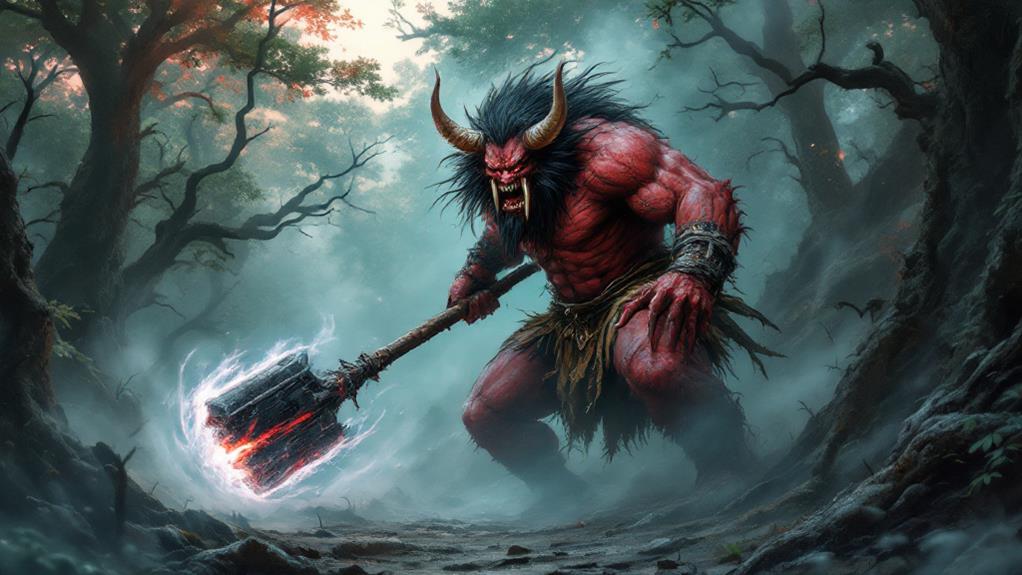
From within the rich tapestry of Japanese folklore, oni emerge as some of the most compelling figures. You're likely familiar with oni through popular culture, but their roots run deep in ancient legends and tales. Oni legends often depict them as fearsome demons or ogres, inhabiting remote mountains or underworld regions. They're notorious for their strength and malevolence, frequently serving as the antagonists in stories that teach moral lessons or explain natural phenomena. In some narratives, oni can even be seen as guardian figures, reflecting the Japanese educational principle of integrating cultural values into understanding morality and responsibility.
In these legends, you'll find that oni variations are plentiful. Some stories portray them as malevolent spirits cast out from heaven, while others depict them as guardian figures, punishing wrongdoers and protecting sacred spaces. Their roles shift depending on the narrative, reflecting the diverse nature of Japanese folklore. The stories you encounter might describe oni as part of a larger group, causing chaos and destruction, or as solitary beings challenging heroes who must confront their fears.
Understanding oni in folklore provides insight into Japan's cultural values and beliefs. As you investigate these legends, you'll appreciate how oni serve as symbols of chaos, punishment, and sometimes protection, reflecting the complexities of human nature and morality.
Physical Characteristics of Oni
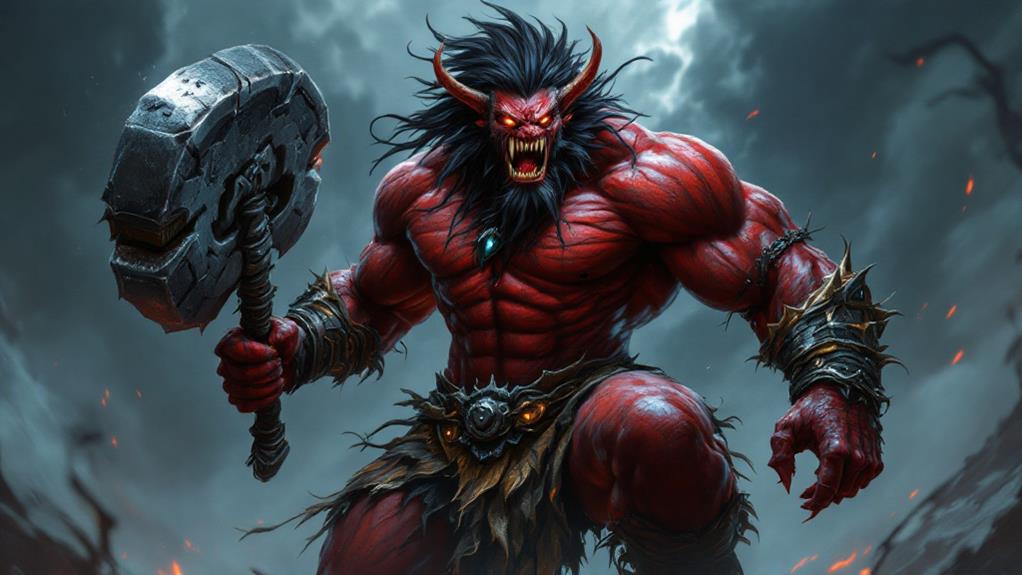
Glimpsing at the physical characteristics of oni offers a window into their formidable presence within Japanese culture. When you imagine an oni, think of a creature that exudes strength and intimidation. Their skin often showcases striking oni color variations, ranging from deep reds and blues to earthy greens and even yellows. These colors not only capture your attention but also symbolize different aspects of their nature, with red often linked to aggression and blue to calmness.
Oni are known for their muscular builds and towering height, enhancing their fearsome appearance. You'll notice that oni horn types vary greatly, further contributing to their distinctiveness. Some oni sport a single, prominent horn atop their forehead, while others boast two or more, each with unique shapes and sizes that enhance their individuality. Their horns are not just for show; they often represent the oni's power and status.
Alongside their horns, oni typically have wild hair, sharp claws, and tusk-like teeth protruding from their mouths, emphasizing their beastly nature. These characteristics combine to create a creature that's both enchanting and intimidating, embodying the essence of an iconic figure in Japanese folklore.
Oni in Traditional Art

In countless traditional Japanese artworks, oni emerge as intriguing figures that command attention. These mythical creatures are often depicted with menacing features, such as sharp fangs, wild hair, and lively skin colors like red or blue. When you examine these pieces, you'll notice how oni representation varies across different art forms. Regardless of it being on a delicate scroll painting or a robust woodblock print, the oni's fearsome presence is unmistakable.
Artists skillfully use oni aesthetics to convey emotions and narratives. For instance, in some paintings, oni appear as symbols of chaos or mischief, reflecting societal fears or moral lessons. You might see them battling heroic figures or lurking in dark landscapes, embodying the unknown or the otherworldly. The exaggerated features and bold colors aren't just for show; they intensify the oni's mystique and create a lasting impact on the viewer.
As you investigate these works, pay attention to the details that define the oni, like their muscular forms and expressive faces. These elements reveal the cultural significance and artistic creativity behind the depiction of oni, making them a fascinating subject in traditional Japanese art.
Oni in Literature and Theater

Japanese literature and theater brim with tales of oni, offering you an extensive investigation into their complex roles and rich symbolism. In classic works like "The Tale of the Heike" and "The Tale of Genji," oni representations vary from malevolent spirits to misunderstood beings. These stories showcase oni archetypes, painting them as both fearsome foes and tragic figures, often reflecting human emotions and moral lessons.
In Noh and Kabuki theater, oni play crucial roles, bringing dramatic tension and depth to performances. You'll find that oni are depicted through elaborate costumes and masks, emphasizing their supernatural presence. These theatrical oni representations often examine themes of revenge, justice, and redemption. For instance, in the Noh play "Rashomon," the oni serves as a catalyst for analyzing human nature, challenging you to reflect on the complexities of good and evil.
Through literature and theater, oni archetypes evolve, mirroring societal changes and cultural shifts. Regardless of being portrayed as terrifying monsters or sympathetic characters, oni invite you to probe into the duality of human nature. By engaging with these stories, you'll gain a deeper appreciation for how oni enrich Japanese cultural narratives.
Symbolism and Meanings
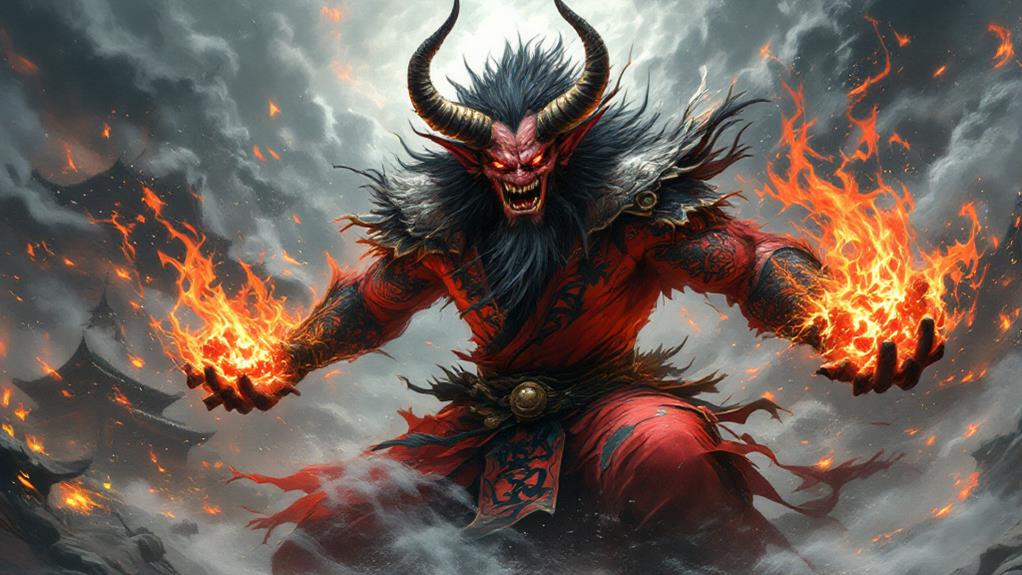
Throughout history, oni have embodied a range of symbolic meanings in Japanese culture, reflecting societal fears, desires, and moral dilemmas. Oni symbolism often portrays these creatures as embodiments of chaos and destruction, warning against moral transgressions. However, oni meanings aren't limited to threats and negativity. They can also symbolize protection and strength, serving as guardians against evil spirits or calamities.
To better appreciate oni symbolism, consider these four aspects:
- Punishment and Justice: Oni often act as enforcers of justice, punishing those who violate societal norms. They serve as reminders of the consequences of immoral behavior.
- Inner Demons: Oni can symbolize personal struggles and the darker side of human nature. Facing an oni might represent confronting your inner fears and weaknesses.
- Transformation and Change: Oni stories often involve transformation, reflecting the concept of change, regardless of whether it's personal growth or societal shifts.
- Protection: Despite their fearsome appearance, oni occasionally symbolize protection. They can ward off evil spirits, ensuring safety and prosperity.
Oni in Festivals and Rituals
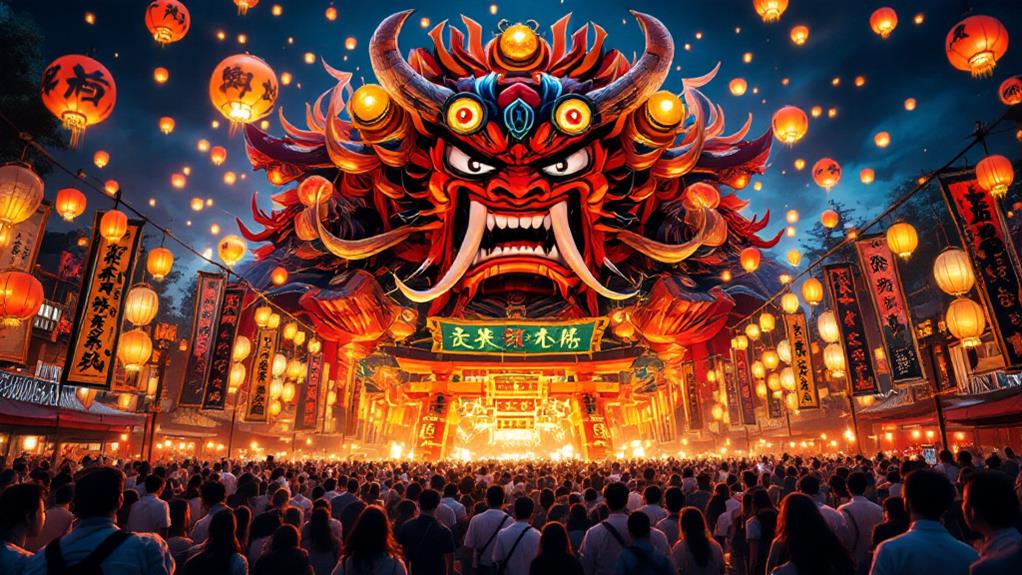
Every year, numerous festivals and rituals across Japan bring the mythical oni to life, blending tradition with spectacle. When you attend these events, you'll find yourself enveloped in lively displays of culture, featuring elaborate oni masks and colorful oni costumes. These elements aren't just for show; they carry deep cultural significance, often intended to ward off evil spirits and bring good fortune.
Take the Setsubun festival, for instance. Celebrated in early February, participants don oni masks and shout, "Oni wa soto! Fuku wa uchi!" meaning "Demons out! Luck in!" as they throw roasted soybeans. It's a spirited ritual aimed at purifying homes and driving away malevolent forces. You might even join in, tossing beans to protect your own space from harm.
In the Tono Oni Festival, performers don oni costumes and dance to the rhythm of drums, reenacting ancient folklore. The dances are mesmerizing, symbolizing the eternal struggle between good and evil. As you watch, you can't help but feel the energy and history behind each movement.
Oni in Modern Media

In the current world, oni have made their way into modern media, captivating audiences with their intriguing blend of myth and mystery. You'll find that oni adaptations are prevalent across numerous platforms, from films and television series to video games and comics. These creatures are often reimagined to fit contemporary narratives while retaining their traditional roots. Oni portrayals range from fearsome villains to misunderstood antiheroes, showcasing the complex oni symbolism that has persisted through centuries.
Consider these popular oni representations in modern media:
- Anime and Manga: Titles like "Nura: Rise of the Yokai Clan" feature oni as central characters, exploring their roles in supernatural societies.
- Video Games: Games such as "Nioh" and "Onimusha" incorporate oni as formidable enemies, integrating cultural elements into gameplay.
- Films: Movies like "Onibaba" and "Big Trouble in Little China" use oni lore to improve their storytelling.
- Merchandise: Oni merchandise, including figurines and clothing, allows fans to celebrate these mythical beings in daily life.
These creative oni adaptations allow fans to enjoy a range of interpretations, keeping the spirit of these legendary creatures alive while introducing them to new audiences.
Cultural Impact of Oni

Oni's presence in modern media isn't just about entertainment; it reflects their profound cultural impact. As you investigate diverse forms of media, you'll notice how oni representation goes beyond scary tales. These mythical creatures embody deeper cultural narratives, symbolizing both chaos and protection. They're often adapted to address contemporary issues, making them relevant across generations.
In literature and film, oni adaptations serve as metaphors for societal fears or moral lessons. For instance, in anime and manga, oni might represent internal struggles or societal pressures, creating a relatable narrative for audiences. These adaptations keep the stories fresh while staying rooted in traditional folklore.
Furthermore, oni have found their way into festivals and public celebrations, showcasing their cultural importance. When you attend such events, you witness how oni blend historical significance with modern interpretation, bridging the past and present. This duality in representation guarantees oni remain a lively part of Japanese identity.
Oni also influence artistic expressions, from traditional paintings to contemporary street art. By engaging with these works, you experience how oni continue to inspire creativity and dialogue, reinforcing their enduring impact on Japanese culture.
